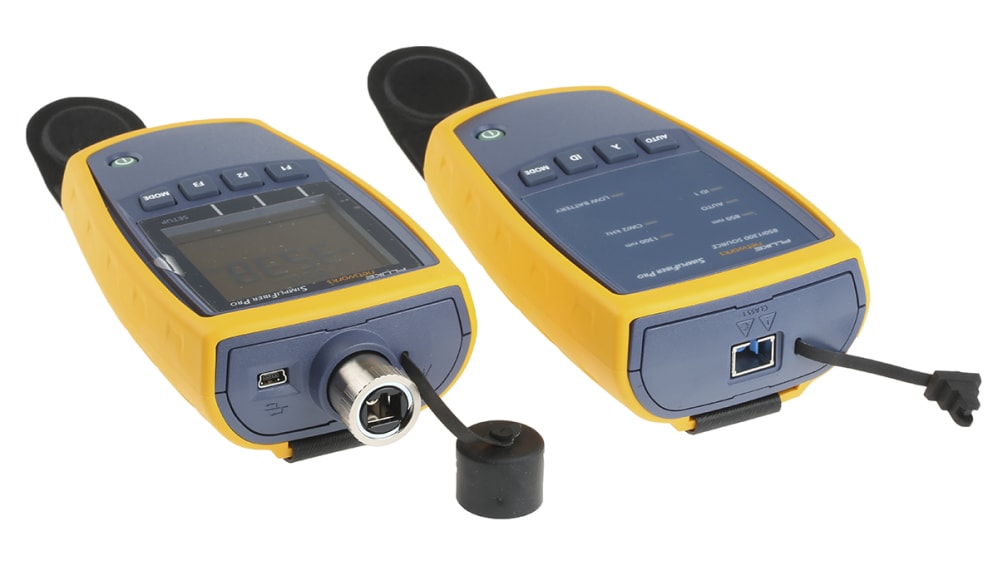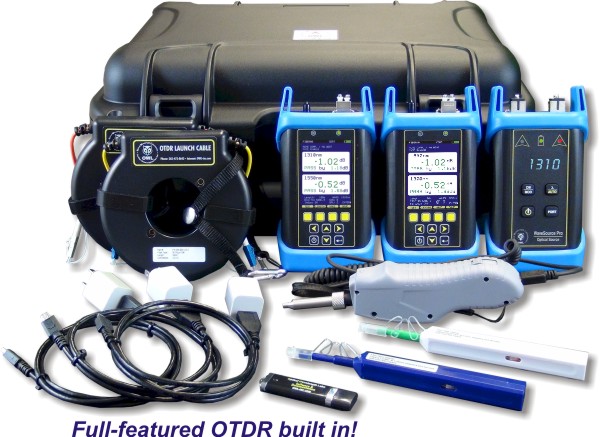A Comprehensive Overview to Optical Measurement System for Fiber Evaluation
When it concerns fiber analysis, understanding optical measurement systems is vital for evaluating efficiency and making sure high quality. You'll discover crucial strategies like interferometry and spectroscopy, which aid you determine key specifications. But there's even more to it than just these approaches; understanding depletion measurement methods can considerably affect your network's performance. As you browse via this overview, you'll reveal understandings that can transform your method to fiber optics.
Comprehending Optical Measurement Solutions
When you check out optical measurement systems, you'll find they're essential for analyzing fibers with precision. These systems utilize light to assess various characteristics of fibers, including diameter, refractive index, and uniformity. By using methods like interferometry and spectroscopy, you can obtain beneficial understandings into the fiber's properties.You'll locate that these systems are designed to minimize mistakes and enhance accuracy, making certain dependable information for your evaluation. Various setups, such as single-mode and multi-mode systems, deal with particular fiber kinds, enabling you to pick the most effective suitable for your needs.Moreover, the integration of innovative software application devices aids you analyze the data successfully, making it much easier to identify any type of disparities or problems. As you examine deeper right into these measurement systems, you'll value just how they enhance the analytical procedure and improve the total high quality of fiber production and screening.
Secret Parameters for Fiber Evaluation
Key criteria for fiber analysis play a vital role in identifying the quality and efficiency of optical fibers. When you evaluate a fiber, you'll desire to focus on features such as depletion, bandwidth, and modal diffusion. Attenuation determines the loss of signal strength as light journeys through the fiber. A reduced depletion value suggests far better high quality and longer transmission distances - fibre testing equipment.Bandwidth describes the data-carrying capacity of the fiber and is crucial for high-speed communication. You'll require to assess the data transfer to assure it meets your application demands. Modal diffusion, which arises from the different rates at which light travels with numerous modes in multimode fibers, impacts signal quality
Techniques for Depletion Measurement

Data transfer and Its Influence on Efficiency
Recognizing transmission capacity is crucial for enhancing fiber performance, as it directly affects the quantity of data that can be sent over a network. Higher transmission capacity indicates you can send out more details concurrently, enabling faster interaction and better total performance. When you're dealing with fiber optics, it's important to think about how transmission capacity communicates with fiber features, such as core size and material properties.If the transmission capacity is limited, you may experience information loss or slower speeds, affecting your applications. Additionally, different sorts of fibers can sustain varying data transfer degrees, so it's vital to choose the right fiber for your details needs.You ought to likewise maintain in mind that environmental elements, like temperature level and outside disturbance, can influence bandwidth. By comprehending these facets, you can make enlightened choices to enhance your fiber optic systems, making certain trustworthy and efficient data transmission.
Refractive Index Measurement Techniques

Total Inner Reflection
Total interior reflection (TIR) serves as a basic concept for determining the refractive index of fibers. When light travels from a denser tool to a less dense one, it can only be completely reflected if the angle of occurrence surpasses a specific limit, understood as the vital angle. This sensation enables you to determine the refractive index by assessing the angles at which light shows or refracts. By utilizing an arrangement that guides light right into a fiber and determines the resulting angles, you can compute the refractive index properly. Understanding TIR not just enhances your fiber evaluation but likewise enhances the style and efficiency of optical systems. Leveraging TIR can lead to extra efficient fiber-based applications.
Interferometric Methods
Structure on the concepts of complete internal reflection, interferometric techniques offer an effective means for determining the refractive index of fibers with high precision. These techniques make use of the disturbance patterns developed when light beam of lights split and recombine after taking a trip various paths. You can utilize arrangements like the Michelson or Mach-Zehnder interferometer to assess stage changes created by adjustments in refractive index. By carefully calibrating your system and assessing the resulting edges, you can determine the refractive index with remarkable accuracy. It's essential to preserve stable environmental conditions to reduce mistakes. With these methods, you'll improve your understanding of fiber homes, resulting in much better performance in various applications, from telecoms to sensing unit technology.
Modal Dispersion and Its Value
Modal diffusion refers to the spreading of light pulses as they travel through a fiber, which can impact the total performance of the system. You'll see that this phenomenon can lead to signify distortion, influencing information transmission rates and quality. Understanding its significance is important for enhancing fiber optic designs.
Interpretation of Modal Diffusion
In optical fiber communications, modal diffusion plays a considerable role in determining signal top quality and transmission speed. It occurs when various light settings travel at differing speeds via the fiber. Given that each mode has distinctive paths and qualities, they can get here at the getting end at different times. This time around distinction can cause signal dispersing and distortion, which can deteriorate the total performance of the communication system. You could encounter modal diffusion mainly in multimode fibers, where the numerous paths of light aggravate the issue. Recognizing modal dispersion is crucial for optimizing fiber designs and ensuring that your interaction systems run effectively, keeping the integrity of the transmitted signals over longer ranges.
Results on Fiber Performance
Comprehending modal dispersion assists highlight its impacts on fiber performance. This phenomenon happens when different modes of light additional resources travel at differing speeds within the fiber, bring about signal dispersing over time. As you analyze fiber optics, you'll notice that increased modal diffusion can substantially break down signal quality, causing lowered transmission capacity and longer transmission distances. In functional terms, this suggests your information can arrive distorted or delayed, impacting general interaction performance. To minimize these results, you might consider utilizing single-mode fibers, which lessen modal diffusion. By choosing the ideal fiber kind and recognizing how modal dispersion influences efficiency, you can boost transmission top quality and warranty reputable data transfer in your optical measurement systems.
Tools and Technologies for Optical Measurements
When it concerns optical measurements, several innovative tools and technologies go to your disposal to boost fiber evaluation. You'll locate fiber optic testers, which analyze signal top quality and efficiency, necessary for preserving suitable network effectiveness. Optical time-domain reflectometers (OTDRs) are vital for locating mistakes and gauging loss over ranges, giving thorough understandings into fiber integrity. Furthermore, spectrometers can evaluate light spectra, helping you identify product homes and composition.Don' t neglect the importance of imaging systems, like electronic microscopes, that allow you to aesthetically examine fiber surface areas for flaws. Take into consideration utilizing polarization analyzers to measure stress and anxiety and stress in fibers, which is important for recognizing their habits under various problems. By leveraging these tools and innovations, you can significantly improve your fiber evaluation processes, making sure have a peek at these guys reliability and high efficiency in your optical networks.
Frequently Asked Concerns
What Are the Expenses Connected With Optical Measurement Systems?
The prices related to optical measurement systems can differ greatly. You'll require to evaluate devices rates, maintenance charges, software program licenses, and potential training expenditures. Budgeting thoroughly will aid you avoid unforeseen economic challenges down the line.

Just How Often Should Fiber Analysis Be Performed?
You should perform fiber analysis routinely, usually every six months or after significant changes in the environment (fiber measurement). This guarantees ideal efficiency and aids determine prospective issues before they influence your system's performance and dependability
Can Optical Measurement Solutions Be Calibrated in the house?
Yes, you can adjust optical dimension systems in your home, but it requires accuracy. Make sure you adhere to the maker's standards, utilize appropriate calibration criteria, and confirm your results to ensure accuracy in your dimensions.
What Industries Generally Utilize Optical Measurement Systems?
You'll find optical dimension systems commonly made use of in markets like telecoms, manufacturing, medical care, and research study. They're vital for quality assurance, fiber analysis, and ensuring exact measurements in numerous applications, enhancing performance and accuracy throughout industries.
Exist Any Type Of Safety Interest In Optical Measurement Systems?
Yes, there are safety and security worry about optical dimension systems. You should constantly put on protective glasses to secure your eyes from intense lights and guarantee appropriate training to take care of equipment securely and stay clear of accidents.